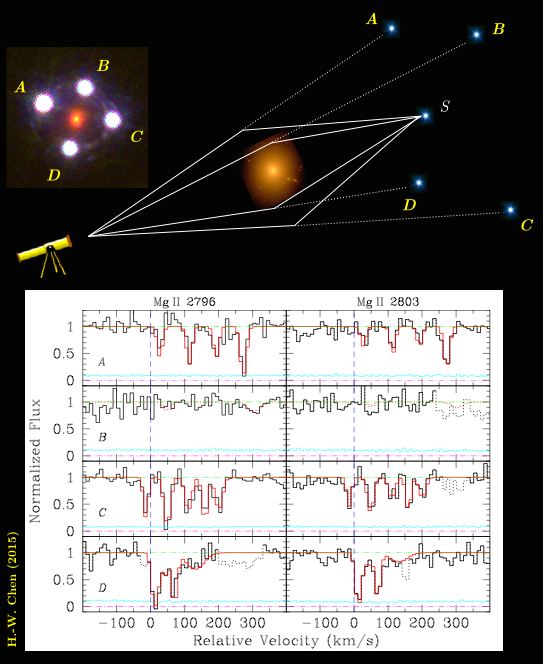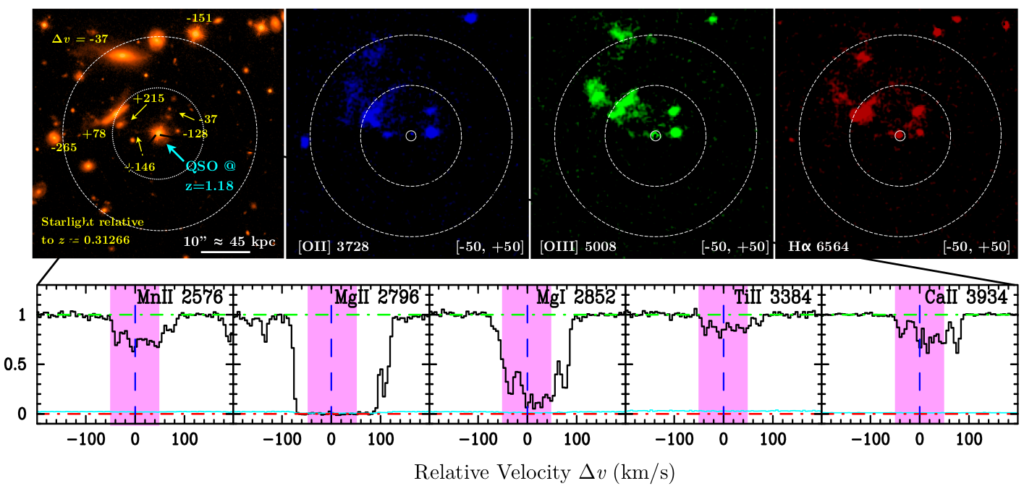
This project utilizes a novel multi-sightline approach to spatially and spectrally resolve the complex circumgalactic medium (CGM). It goes beyond traditional pencil-beam quasar absorption-line studies and establishes a sharper view of the circumgalactic gas based on between 2- and 4-point sampling of individual gaseous halos. A pilot study of spatially resolved CGM around two distant spiral galaxies is published in Chen et al. (2014), demonstrating that there exists a strong coherence and high covering fraction of chemically-enriched gas around distant galaxies. Subsequent studies of spatially resolved interstellar and circumgalactic gas around three distant elliptical galaxies in Zahedy et al. (2016) and Zahedy et al. (2017) further revealed a surprisingly large amount of cool gas in the inner 5-10 kpc of these massive quiescent galaxies. The presence of cool gas, coupled with the apparent lack of star formation in these quiescent galaxies, presents a new puzzle for the formation and evolution of massive elliptical galaxies.

Combining absorption-line observations from quasar echelle spectroscopy and emission-line observations from wide-field integral field spectroscopy provides an exciting new opportunity for studying gas and galaxy co-evolution. The figure above presents a spectacular line-emitting nebula, reaching to ≈ 100 physical kpc (pkpc) from a previously known damped Lyα absorber (DLA) at zDLA = 0.313. The line-emitting gas closely follows the motions of group galaxies. One of the denser streams passes directly in front of the QSO with kinematics consistent with the absorption profiles recorded in the QSO echelle spectra. The emission morphology, kinematics, and line ratios of the nebula suggest that shocks and turbulent mixing layers, produced as a result of stripped gaseous streams moving at supersonic speed across the ambient hot medium, contribute significantly to the ionization of the gas. This study presented in Chen et al. (2019) demonstrates that gas stripping in low-mass galaxy groups is effective in releasing metal-enriched gas from star-forming regions, producing absorption systems in QSO spectra.

